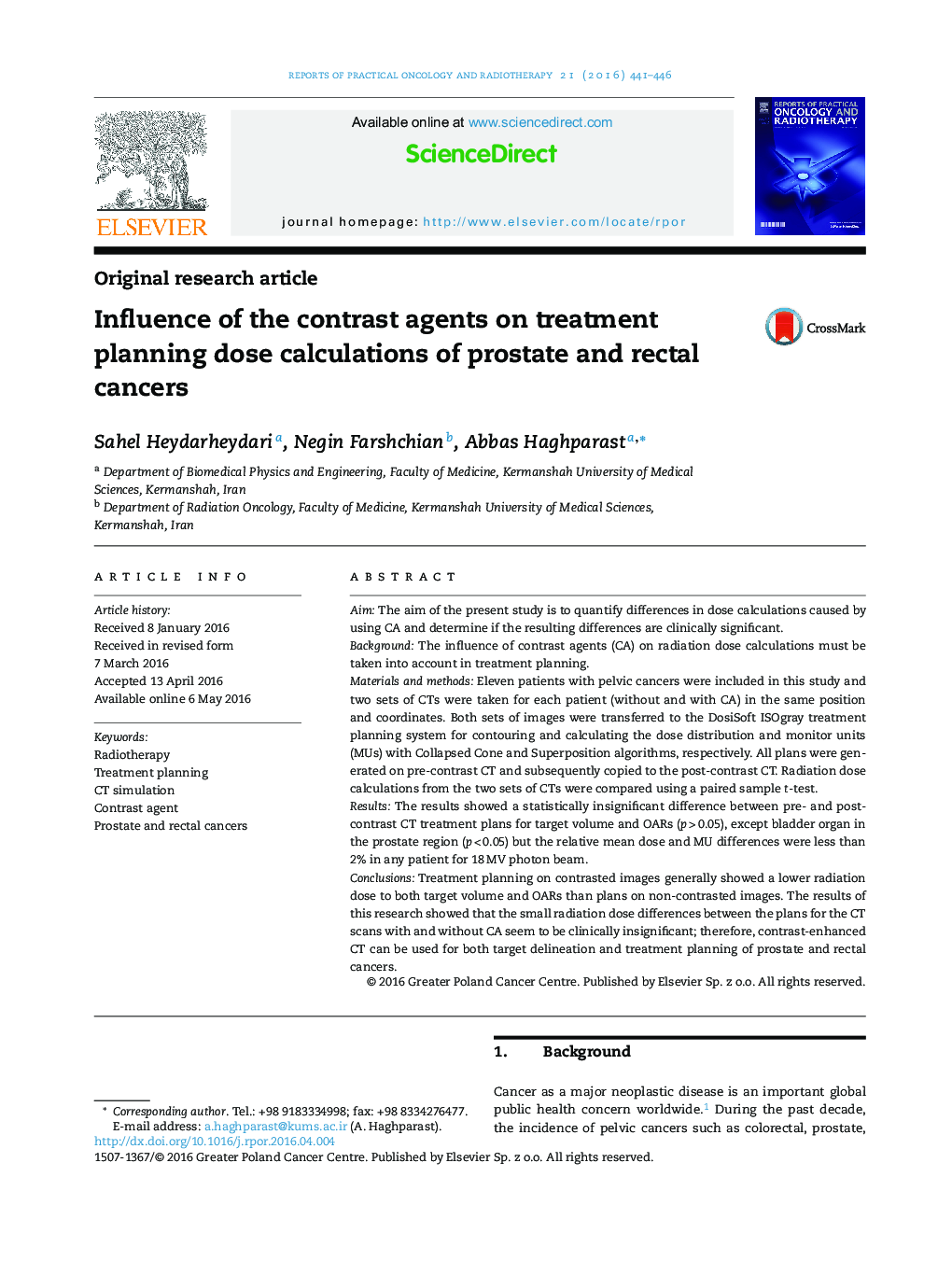| Article ID | Journal | Published Year | Pages | File Type |
|---|---|---|---|---|
| 1856955 | Reports of Practical Oncology & Radiotherapy | 2016 | 6 Pages |
AimThe aim of the present study is to quantify differences in dose calculations caused by using CA and determine if the resulting differences are clinically significant.BackgroundThe influence of contrast agents (CA) on radiation dose calculations must be taken into account in treatment planning.Materials and methodsEleven patients with pelvic cancers were included in this study and two sets of CTs were taken for each patient (without and with CA) in the same position and coordinates. Both sets of images were transferred to the DosiSoft ISOgray treatment planning system for contouring and calculating the dose distribution and monitor units (MUs) with Collapsed Cone and Superposition algorithms, respectively. All plans were generated on pre-contrast CT and subsequently copied to the post-contrast CT. Radiation dose calculations from the two sets of CTs were compared using a paired sample t-test.ResultsThe results showed a statistically insignificant difference between pre- and post-contrast CT treatment plans for target volume and OARs (p > 0.05), except bladder organ in the prostate region (p < 0.05) but the relative mean dose and MU differences were less than 2% in any patient for 18 MV photon beam.ConclusionsTreatment planning on contrasted images generally showed a lower radiation dose to both target volume and OARs than plans on non-contrasted images. The results of this research showed that the small radiation dose differences between the plans for the CT scans with and without CA seem to be clinically insignificant; therefore, contrast-enhanced CT can be used for both target delineation and treatment planning of prostate and rectal cancers.
